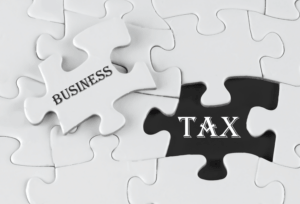
However, if you learned this skill through other means, such as coursework or on your own, your cover letter is a great place to go into more detail. For example, you could describe a project you did at school that involved evaluating a company’s financial health or an instance where you helped a friend’s small business work out its finances. To compare the current ratio of two companies, https://www.bookstime.com/ it is necessary that both of them use the same inventory valuation method. For example, comparing current ratio of two companies would be like comparing apples with oranges if one uses FIFO while other uses LIFO cost flow assumption for costing/valuing their inventories. The analyst would, therefore, not be able to compare the ratio of two companies even in the same industry.
What can be considered a generally good current ratio for a healthy business?
You will need to increase your current assets or reduce current liabilities to raise your current ratio above 1.0. The quick ratio is commonly used to measure the financial health of companies that count inventory as a large percentage of current assets, such as retail and manufacturing businesses. A primary criticism of the quick ratio is it may overestimate the difficulty of quickly selling inventory at market price.
Comparing with other liquidity ratios

A higher cash ratio indicates a company has enough readily available funds to cover its short-term debts. One limitation of the current ratio emerges when using it to compare different companies with one another. Businesses differ substantially among industries; comparing the current ratios of companies across different industries may not lead to productive insight.
- As its name suggests, the current ratio of any one company is constantly changing.
- For instance, the liquidity positions of companies X and Y are shown below.
- Such purchases require higher investments, often financed by debt, increasing the current asset side of the working capital ratio.
- Inventory and prepaid assets are not as highly liquid as other current assets because they cannot be quickly and easily converted into cash at a known value.
- These industry-specific examples serve as a guideline for investors and analysts to better understand the ideal current ratio range in relation to the company’s sector of operation.
- Both of these are easily found on the company’s balance sheet, and it makes the current ratio one of the simplest liquidity ratios to calculate.
Current Liabilities
A current ratio below 1.0 indicates a business may be unable to cover its current liabilities with current assets. The current ratio is a metric used by accountants and finance professionals to understand a company’s financial health at any given moment. This ratio works by comparing a company’s current assets (assets that are easily converted to cash) to current liabilities (money owed to lenders and clients).

Current Ratio Formula
The current ratio can be useful for judging companies with massive inventory back stock because that will boost their scores. On the other hand, the quick ratio will show much lower results for companies that rely heavily on inventory since that isn’t included in the calculation. Note that the value of the current ratio is stated in numeric format, not in percentage points.You can obtain the exact values of particular factors of this equation from the company’s annual report (balance sheet). In some cases, companies may attempt to improve their Current Ratio by delaying payments or accelerating the collection of accounts receivable.
As the amount expires, the current asset is reduced and the amount of the reduction is reported as an expense on the income statement. Here, we’ll go over how to calculate the current ratio and how it compares to some other financial ratios. Finally, the operating cash flow ratio compares a company’s active cash flow from operating activities (CFO) to its current liabilities. This allows a company to better gauge funding capabilities by omitting implications created by accounting entries.
How comfortable are you with investing?
Company A also has fewer wages payable, which is the liability most likely to be paid in the short term. This means that Apple technically did not have enough current assets on hand to pay all of its short-term bills. Analysts may not be concerned due to Apple’s ability to churn through production, sell inventory, or secure short-term financing (with its $217 billion of non-current assets pledged as collateral, for instance). The current ratio can be a useful measure of a company’s short-term solvency when it is placed in the context of what has been historically normal for the company and its peer group. It also offers more insight when calculated repeatedly over several periods.
- We are compensated in exchange for placement of sponsored products and services, or by you clicking on certain links posted on our site.
- The current ratio is part of what you need to understand when investing in individual stocks, but those investing in mutual funds or exchange-trade funds needn’t worry about it.
- A current ratio that is in line with the industry average or slightly higher is generally considered acceptable.
- Liquidity refers to how quickly a company can convert its assets into cash without affecting its value.
Comparing the current ratio with industry peers can provide a better understanding of where a company stands in terms of liquidity. If a company’s current ratio is less than one, it may have more bills to pay than easily accessible resources to pay those bills. For example, a company may have a very high current ratio, but its accounts receivable may be very aged, perhaps because its customers pay slowly, which may be hidden in the current ratio. Analysts also must consider the quality of a company’s other assets vs. its obligations. If the inventory is unable to be sold, the current ratio may still look acceptable at one point in time, even though the company may be headed for default. If your current ratio drops below one, it means your company has insufficient current assets to meet short-term obligations.

Current Ratio in Financial Analysis
Therefore, this compensation may impact how, where and in what order products appear within listing categories, except where prohibited by law for our mortgage, home equity and other home lending products. Other factors, such as our own proprietary website rules and whether a product is offered in your area or at your self-selected credit score the current ratio equals: range, can also impact how and where products appear on this site. While we strive to provide a wide range of offers, Bankrate does not include information about every financial or credit product or service. However, similar to the example we used above, special circumstances can negatively affect the current ratio in a healthy company.